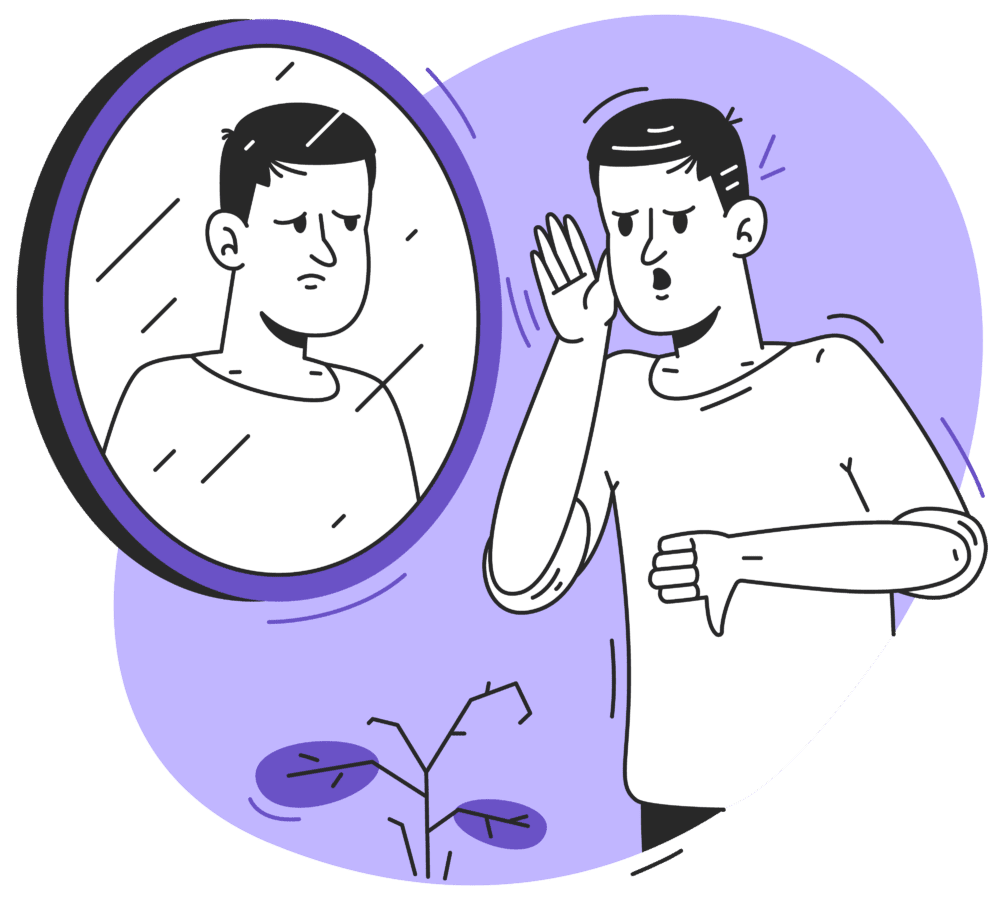Schema Therapy stands out as a powerful approach that delves deep into the core beliefs and patterns ingrained within an individual’s psyche. Developed by Dr. Jeffrey Young, Schema Therapy goes beyond surface-level symptoms to address the underlying negative schemas that often dictate one’s thoughts, feelings, and behaviours. Negative schemas, also known as core beliefs, are fundamental themes about oneself, others, and the world, which develop early in life and shape our perceptions. In this article, we will explore the concept of early maladaptive negative schemas in Schema Therapy, shedding light on their origins, manifestations, and the impact they can have on individuals’ lives.
Understanding Early Maladaptive Negative Schemas:
Negative schemas are deeply ingrained patterns that individuals develop in response to early adverse experiences or unmet emotional needs. These schemas often lead to distorted perceptions of oneself and the world, influencing how individuals interpret new information and interact with others. Schema Therapy identifies several core negative schemas that commonly occur in individuals, each manifesting uniquely. There are 18 early maladaptive negative self-schemas. Let’s explore these pervasive negative schemas:
Negative Schemas
- Abandonment/Instability: Fear of being abandoned or left alone, leading to feelings of insecurity and anxiety in relationships.
- Mistrust/Abuse: Belief that others will betray, exploit, or hurt you
- Emotional Deprivation: Belief that one’s emotional needs will never be met, leading to feelings of emptiness
- Defectiveness/Shame: Belief that one is fundamentally flawed, unlovable, or unworthy of love
- Social Isolation/Alienation: Feeling different from others, disconnected, or socially isolated, often due to a sense of not belonging.
- Dependence/Incompetence: Belief in one’s inability to handle everyday tasks or make competent decisions without help or guidance.
- Vulnerability to Harm or Illness: Excessive fear of potential disaster, accidents, or serious illness, leading to anxiety.
- Enmeshment/Undeveloped Self: Feeling controlled by others, leading to a lack of identity and autonomy.
- Failure: Belief that one is incapable of achieving success or competence, leading to a fear of failure and avoidance
- Subjugation: Excessive need to please others and meet their needs at the expense of one’s own desires.
- Self-Sacrifice: Excessive focus on meeting the needs of others, often to the detriment of one’s own well-being.
- Approval-Seeking/Recognition-Seeking: Reliance on others’ approval, recognition, or validation to feel worthy, leading to people-pleasing.
- Negativity/Pessimism: Constant focus on the negative aspects of situations, self, or future, leading to a pervasive sense of hopelessness.
- Emotional Inhibition: Suppression or avoidance of expressing emotions, often due to fear of rejection or criticism.
- Unrelenting Standards/Hypercriticalness: Setting excessively high standards for oneself and others, leading to dissatisfaction and self-criticism.
- Punitiveness: Strong belief in the need for self-punishment, often manifesting as harsh self-criticism or self-sabotaging.
- Entitlement/Grandiosity: Belief in one’s superiority and entitlement to special treatment, leading to a lack of empathy and disregard for others’ needs.
- Insufficient Self-Control/Self-Discipline: Difficulty in managing impulses and controlling emotions, often leading to impulsive actions and regret.
Impact and Treatment:
Each of these schemas represents a unique core belief system that individuals may develop early in life, influencing their thoughts, emotions, and behaviours throughout adulthood. Recognizing and addressing these negative schemas is fundamental to the therapeutic process in Schema Therapy, enabling individuals to challenge and change these maladaptive patterns for a more fulfilling life.

Negative schemas significantly impact various aspects of individuals’ lives, affecting their relationships, self-esteem, and overall well-being. However, Schema Therapy provides effective strategies to identify, challenge, and change these deeply ingrained patterns.
- Cognitive Techniques: Schema Therapy employs cognitive techniques to help individuals recognize and challenge their negative schemas. By identifying automatic thoughts associated with these schemas, individuals can learn to reframe their thinking patterns and develop more balanced perspectives.
- Emotional Techniques: Emotion-focused interventions enable individuals to explore and process their underlying emotions related to the negative schemas. Individuals can connect with their inner child through techniques such as imagery and chair work. This will help them work through unresolved emotional experiences.
- Behavioural Techniques: Behavioral interventions focus on breaking maladaptive patterns and promoting healthier behaviours. By engaging in behavioural experiments and role-playing scenarios, individuals can develop new coping strategies and interpersonal skills.
Conclusion
Negative schemas, deeply rooted in early life experiences, play a pivotal role in shaping individuals’ perceptions and behaviours. Through the lens of Schema Therapy, these schemas can be identified, understood, and ultimately transformed. By addressing these core beliefs, individuals can pave the way for profound healing and lasting change, leading to healthier relationships, improved self-esteem, and a brighter outlook on life. As we continue to unravel the complexities of negative schemas, Schema Therapy stands as a beacon of hope, guiding individuals toward a more fulfilling and authentic existence.
Ready to begin? Start your online therapy journey today. Book your first session now.




